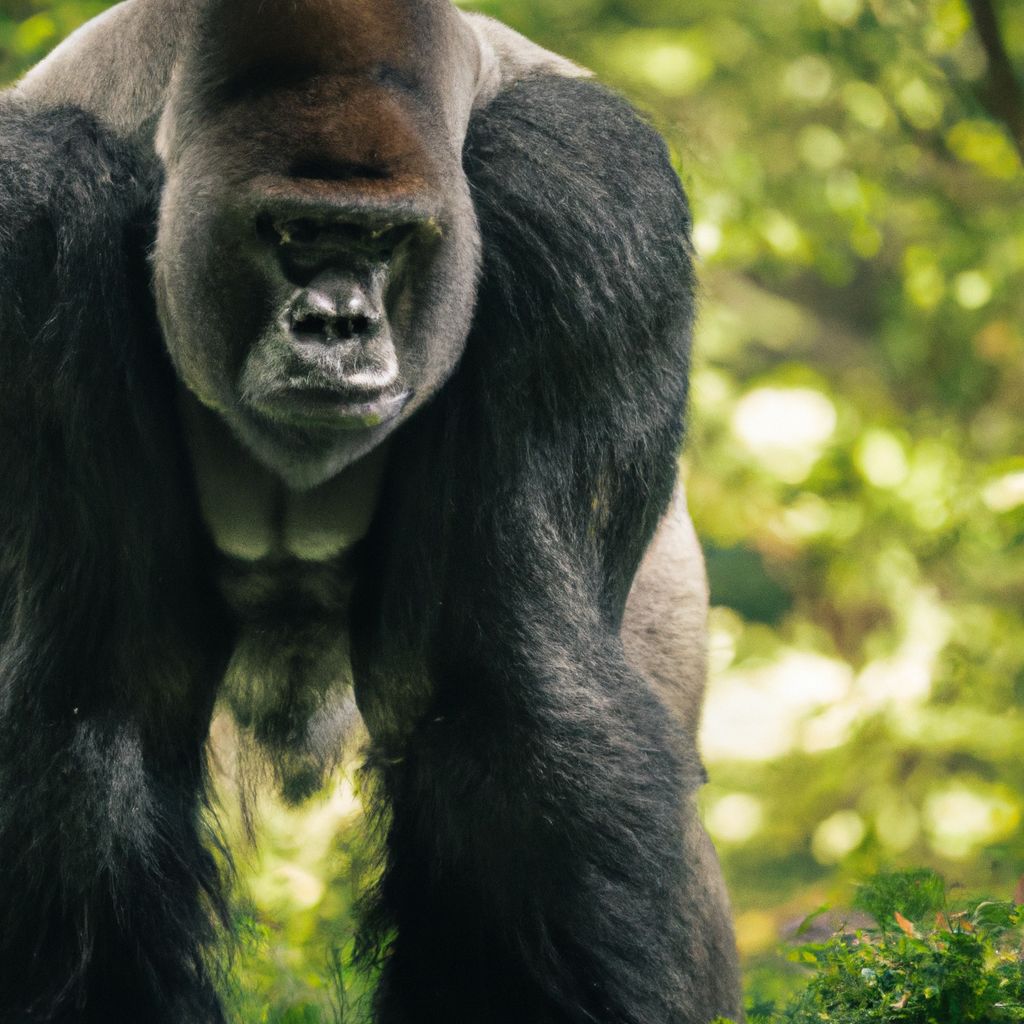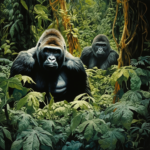
To understand why Western Lowland Gorillas are endangered, delve into the introduction of this topic. Gain insights into the background information on these gorillas and their habitat, as well as an explanation of their current endangered status. Discover the reasons behind this precarious situation.
Key Takeaways
- Western lowland gorillas are endangered due to a combination of factors including habitat loss, poaching, and disease.
- Deforestation and the expansion of agriculture are major contributors to the loss of gorilla habitat.
- Poaching for bushmeat and the illegal pet trade also pose a significant threat to the survival of these gorillas.
- Diseases such as Ebola and the recent outbreak of COVID-19 can have devastating impacts on gorilla populations.
- Conservation efforts, such as protected areas and anti-poaching measures, are crucial for the survival of western lowland gorillas.
- Collaborative efforts between governments, conservation organizations, and local communities are necessary to address the various threats facing these gorillas and ensure their long-term survival.
Background information on Western Lowland Gorillas and their habitat
Western Lowland Gorillas are a captivating species that call the dense forests of Central Africa their home. With 98% of their DNA in common with humans, these powerful creatures are our closest living relatives. They inhabit lush rainforests and swamp forests, where they feast on fruits, leaves, seeds, and stems, with the occasional insect thrown in the mix.
The Western Lowland Gorillas play an important role in keeping their ecosystem balanced. Through dispersing seeds and managing vegetation, they help many plants survive and grow. Plus, they regulate the numbers of herbivores in the forest, making sure everyone gets their share.
One unique trait of these gorillas is their social structure. They live in secure family groups led by a silverback male who looks out for the rest of the gang. This creates a strong sense of community among members, who work together to keep everyone safe and sound.
We must understand and appreciate these remarkable creatures while also being aware of the threats they face. Bushmeat trade and logging are both serious dangers that Western Lowland Gorillas are up against. If we don’t take urgent steps to protect their habitats and stop poaching, these majestic animals might not be around for long.
It’s time to join forces and support projects that keep both Western Lowland Gorillas and their habitats safe. Donating to trustworthy organizations or volunteering are two great ways to make a real difference. Let’s do our best to ensure future generations can still witness the beauty and wonder of these endangered creatures.
Explanation of the current endangered status
The endangered status of certain species is a pressing issue that needs attention. Numerous factors like habitat loss, climate change, and poaching are leading to a decline in their population numbers. This has far-reaching effects on ecosystems, disrupting the delicate web of life. Moreover, human activities are also responsible for endangering species. For example, illegal wildlife trade, deforestation, pollution, and climate change can accelerate species vulnerability.
To comprehend the current endangered state, one must look into the history of the black rhinoceros. Once widespread across Africa, its horn was highly sought after due to traditional beliefs and medicinal practices. This led to an increase in poaching, devastating their numbers and pushing them towards extinction.
Causes of Endangerment

To understand the causes of endangerment in Western Lowland Gorillas, delve into the section “Causes of Endangerment” with its sub-sections: “Habitat loss and fragmentation,” “Poaching and illegal wildlife trade,” and “Diseases and epidemics.” Explore how these factors contribute to the vulnerability of these majestic creatures.
Habitat loss and fragmentation
The destruction and division of habitats are major causes of species endangerment. Humans’ population growth and industrialization lead to forests being cleared for agriculture, cities, and infrastructure. This leaves animals without homes and resources. Fragmentation cuts natural habitats into isolated patches, which disrupts ecological processes and prevents movement amongst populations.
Competition for limited resources is heightened by reduced habitat areas. Additionally, isolated populations have less genetic diversity, increasing risks of inbreeding depression and diseases. It’s essential to recognize the urgency of addressing habitat loss and fragmentation before it’s too late. We must promote sustainable practices like land preservation to protect ecosystems. It’s our responsibility to preserve these habitats so future generations can experience the world’s biodiversity.
Poaching and illegal wildlife trade make endangered species even rarer.
Poaching and illegal wildlife trade
Poaching and illegal wildlife trade have a devastating effect. Every day, countless animals are killed. Tigers, elephants, rhinos and pangolins are the most targeted species, as their body parts bring in large sums of money on the black market. The loss of these creatures not only disrupts ecosystems, but also takes away the beauty and wonder from future generations.
In addition, this illegal activity fuels corruption and organized crime. It serves as an income for armed groups, destabilizing many regions. It’s hard to monitor and regulate, allowing criminal networks to expand.
We need urgent action from governments, law enforcement agencies and individuals. Stiffer penalties should be given to those involved in poaching and trafficking. International cooperation is key to dismantling the criminal networks that benefit from this.
We can also do our part. We can support groups working to protect endangered species and their habitats. We should educate ourselves on the impact of our choices, like avoiding products made from endangered animals.
Many animals are facing extinction due to poaching and illegal wildlife trade. Let’s come together to prevent it. Working together, we can create a brighter future for all living beings on Earth. We must act now!
Diseases and epidemics
Epidemics spread quickly amongst vulnerable species, due to a lack of immune defences. This results in a decrease in their populations. Diseases can be passed through direct contact or intermediate vectors, e.g. insects. Avian influenza and white-nose syndrome have caused significant mortality in bird and bat populations.
The human encroachment into ecosystems brings us closer to wildlife, increasing the chances of disease transmission. The unlawful trafficking of diseased animals further contributes to the global spread of diseases. Climate change can also encourage the proliferation of disease-causing agents, affecting various species.
Worldwide, heightened travel and trade between continents make it easier for diseases to cross borders. This intercontinental connectivity increases the risks faced by vulnerable ecosystems.
For example, the 1994 outbreak of the canine distemper virus had a major effect on wild dog populations in Africa. These occurrences are a stark reminder of how vital diseases are in exacerbating endangerment crises.
The loss of endangered species can be compared to playing a never-ending game of ecological Jenga. Eventually, the whole tower will collapse.
Impacts on the Ecosystem
To better understand the impacts of Western Lowland Gorillas on the ecosystem, delve into their significance within their habitat. Discover the consequences that arise from their decline, not only affecting other species but also the overall environment.
Significance of Western Lowland Gorillas in their ecosystem
Western Lowland Gorillas play a crucial role in their environment. As seed dispersers, they help to renew forests by spreading seeds through their feces. This increases the number and range of plants, sustaining other animals that depend on these plants for food and shelter.
These intelligent animals also regulate herbivore populations by their diet. Eating lots of fruit, leaves, and stems, they form the structure of vegetation and prevent overgrowth. This indirectly benefits smaller herbivores, providing them with the right habitat.
Moreover, Western Lowland Gorillas are known as “flagship species” due to their charm and popularity in conservation attempts. Their presence in protected areas encourages ecotourism, which pumps money into local economies and conservation efforts. By preserving their habitats, we protect not only these remarkable creatures but also the whole eco-system they are part of.
An astounding example of the importance of Western Lowland Gorillas is the story of Zanga, a silverback who made headlines in 2019. Zanga was famed for his mild nature and authority within his gorilla group. His abrupt death from poaching caused worldwide shock and raised awareness of the critical need for stronger conservation actions.
Who needs reality TV when you have the diminishing population of species causing chaos and excitement in the eco-system?
Consequences of their decline on other species and the environment
Certain species declining can have huge consequences. When they go, ecosystems can be disrupted leading to a ‘ripple effect’ with other plants and animals. A key species’ decline can set off a domino effect on the food chain. For example, if a predator’s population reduces, its prey will increase and may eat up their food source. This affects the prey and also other organisms like plants that need them for pollination or seed dispersal.
The disappearance of certain species can mean the loss of important ecosystem services. Bees are essential for pollinating plants and maintaining biodiversity. Without them, crop yields could drop and plant diversity reduce.
There are also social and economic effects to consider. Take sea otters off the coast of California. When their numbers went down due to overhunting, sea urchins multiplied. This damaged kelp forests and impacted local fisheries and tourism industries.
An example of this is Yellowstone National Park. Wolves were removed as top predators, so elk numbers rose and overgrazed their habitats. This caused a decline in vegetation like aspen trees and changed stream ecosystems. Reintroducing wolves helped restore balance by regulating elk numbers and helping other species, such as beavers. Conservation efforts try to correct the damage done by humans.
Conservation Efforts

To ensure Western Lowland Gorillas’ preservation, various conservation efforts have been implemented. Gain insights into the effectiveness of existing initiatives, the crucial role played by international organizations and NGOs, as well as the success stories and positive developments achieved in gorilla conservation.
Overview of existing conservation initiatives
Conservation has become a worldwide priority. Here are a few of the initiatives:
- Wildlife preservation: Organizations are working towards protecting endangered species and their habitats. This includes research, habitat restoration, and anti-poaching/illegal trade efforts.
- Sustainable agriculture: Farming practices that place emphasis on sustainability and the environment are becoming popular. Organic farming, agroforestry, and water conservation methods are some of these initiatives.
- Marine conservation: To protect oceans and marine life, projects are being developed. These include creating marine protected areas, promoting sustainable fishing, and fighting against pollution.
These initiatives are more than just about conserving nature; they’re also necessary to ensure the well-being of communities. By protecting the environment, we can preserve resources for upcoming generations.
It’s essential for everyone to join the conservation movement. You can contribute by volunteering, donating, or raising awareness. With our combined efforts, we can create a world with a diverse and abundant environment! Join us today and be part of this journey to a greener planet!
Role of international organizations and NGOs
International organizations and NGOs are key players in conservation efforts around the globe. They provide funds, technical advice and more to aid research, raise awareness and implement strategies to address issues.
These orgs enable scientists, researchers and local communities to protect endangered species, restore habitats and promote sustainable practices. They also foster collaborations between governments, local communities, businesses and other relevant actors – leading to more effective conservation strategies.
The IUCN is a great example of the power of international organizations. Through their Red List of Threatened Species, they identify species on the brink of extinction and help protect their habitats. All this adds up to a brighter future for our planet!
Success stories and positive developments
Recent years have brought positive results from conservation efforts. Success stories and developments demonstrate dedicated protection of our environment and biodiversity.
– Reforestation programs and wetland restoration projects have been successful in restoring ecosystems that were once degraded. This brings back various plant and animal species, harmonizing their natural habitats.
– Thanks to conservation efforts, many endangered species have been saved from extinction. Captive breeding, habitat protection, and international cooperation are key factors for their survival and recovery.
– Sustainable resource management is becoming popular. It lets us meet current needs without risking the future.
– Technologies like drones for monitoring wildlife, and genetic research, provide efficient tools for conservation.
– Education campaigns and public awareness initiatives make people more mindful of their impact on nature, leading to positive behaviours.
– Research uncovers new strategies and solutions for environmental preservation. We can use scientific advancements and innovative approaches to further our conservation efforts and safeguard our planet’s ecosystems.
Pro Tip: Collaborate with local communities and indigenous peoples when implementing conservation projects.
Challenges & Future Outlook: The road to successful conservation efforts may have unexpected detours.
Challenges and Future Outlook

To overcome challenges and ensure the future of Western Lowland Gorillas, explore the obstacles faced in their conservation and discover potential solutions and strategies for their long-term preservation. Obstacles in conservation, potential solutions, and preservation strategies are the key focus of this section.
Obstacles faced in the conservation of Western Lowland Gorillas
Conserving Western Lowland Gorillas is a difficult task. Threats to their survival include deforestation, mining, agriculture, illegal poaching and the pet trade. Funding and resources are limited, and political instability in some regions is an additional challenge. However, organizations and researchers are still striving to protect them.
Infectious diseases such as Ebola have recently become a major concern. Outbreaks have decimated gorilla populations, leaving behind orphaned infants in need of care. Scientists are researching ways to understand and prevent disease transmission.
An inspiring example of resilience is the Odzala-Kokoua National Park group of gorillas. They survived a deadly Ebola outbreak despite the loss of their silverback leader. This demonstrates both the difficulties they face and their capacity to overcome them.
It’s essential that we continue our efforts to conserve Western Lowland Gorillas. We need to tackle habitat destruction, poaching and disease outbreaks. Only by working together – governments, NGOs, local communities and researchers – can we create a sustainable future for this critically endangered species and protect its role in global biodiversity.
Potential solutions and strategies for long-term preservation
Organizations can employ strategies to safeguard valuable information for future generations. Utilizing cloud storage, implementing backup systems, and adopting digital preservation techniques are a few such solutions. Metadata standards and documentation practices make future retrieval and interpretation of data easier. Machine learning algorithms automate the identification and classification of digital assets. Auditing and monitoring storage systems can detect potential issues early on. Finally, collaborating with archival experts and institutions can provide useful insights into best practices.
The Library of Congress faced the challenge of preserving millions of digital photographs. Their strategy? Generating multiple copies stored in different locations in diverse formats. Constant migration to new media ensures that the photos remain accessible despite advances in technology.
Frequently Asked Questions
1: Why are Western Lowland Gorillas endangered?
Western Lowland Gorillas are endangered due to habitat loss and fragmentation caused by deforestation, illegal logging, and expansion of agricultural activities. They are also threatened by poaching for their meat, body parts, and the illegal pet trade.
2: How many Western Lowland Gorillas are left in the wild?
The exact number of Western Lowland Gorillas in the wild is unknown, but estimates suggest that there are less than 100,000 individuals left. The population has declined by more than 60% over the past 25 years.
3: Are Western Lowland Gorillas protected?
Yes, Western Lowland Gorillas are protected by international and national laws. They are listed as critically endangered on the IUCN Red List of Threatened Species. Conservation organizations and governments are working to enforce these protections and implement programs for their conservation.
4: What are the main threats to Western Lowland Gorillas?
The main threats to Western Lowland Gorillas include habitat destruction, poaching, diseases, and the potential impact of climate change. Loss of habitat reduces their food sources and disrupts their social structures, making them more vulnerable to other threats.
5: How can I help in the conservation of Western Lowland Gorillas?
You can help by supporting organizations working directly for their conservation, such as donating to reputable wildlife conservation charities or volunteering your time and skills. Raising awareness about their plight and advocating for stronger protections are also effective ways to contribute.
6: Are Western Lowland Gorillas close to extinction?
While Western Lowland Gorillas are critically endangered, they are not yet close to extinction. However, immediate and concerted conservation efforts are crucial to ensuring their survival and preventing further population decline.
Conclusion
To reinforce the significance of our ongoing efforts to protect these endangered Western Lowland Gorillas, this conclusion recaps the major points discussed. It also highlights the importance of our ongoing conservation initiatives.
Recap of major points discussed
The main ideas discussed were all about getting to the heart of the topic. Here’s a summary of these core points:
- The importance of good communication was highlighted to help avoid confusion and promote comprehension.
- Research was highlighted as vital for providing solid, correct information.
- Planning and organization were flagged as essential for successful task completion.
- Creativity was seen as key for problem-solving and decision-making.
- Teamwork and collaboration were pointed out as important for collective success.
- Adaptability and flexibility were acknowledged as great qualities in an ever-changing world.
It’s important to remember that these points form the basis for further discussion of the subject. Focusing on them can lead to improved results in any endeavor.
Pro Tip: Remember, putting all these points into practice can create a more rounded approach to overcoming challenges effectively.
Importance of ongoing efforts to protect these endangered animals
It’s vital to continue protecting endangered animals. We must act now to help their survival. This includes conserving their habitats, preventing illegal wildlife trade, and raising awareness.
Support conservation orgs and pass laws to give these animals a fighting chance. We must address the root causes of their endangerment, such as habitat loss, poaching, illegal trafficking, and climate change.
Scientific research is also key. By studying behavior, genetics, and ecological needs, we can create targeted conservation strategies.
One success story is the black rhinoceros population in South Africa. Anti-poaching patrols and community engagement have increased their numbers. This proves that collaborative approaches can safeguard our planet’s vulnerable creatures.
References:




